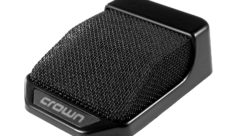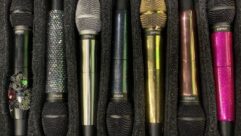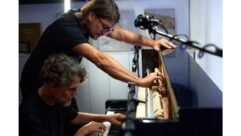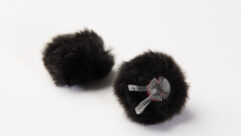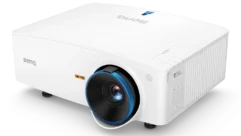Two of the more historically persistent problems for sound operators have involved placing microphones on people and mixing free form discussion. Boundary microphones led the way as conference rooms evolved toward more technical independence and automatic microphone mixers made it possible to mix panel discussion programs between a dozen or more participants with sound reinforcement. The boundary principle has been adapted for pickup of pianos and other instruments as well as for effects in sports coverage while automixers have become very smart and incredibly useful machines.
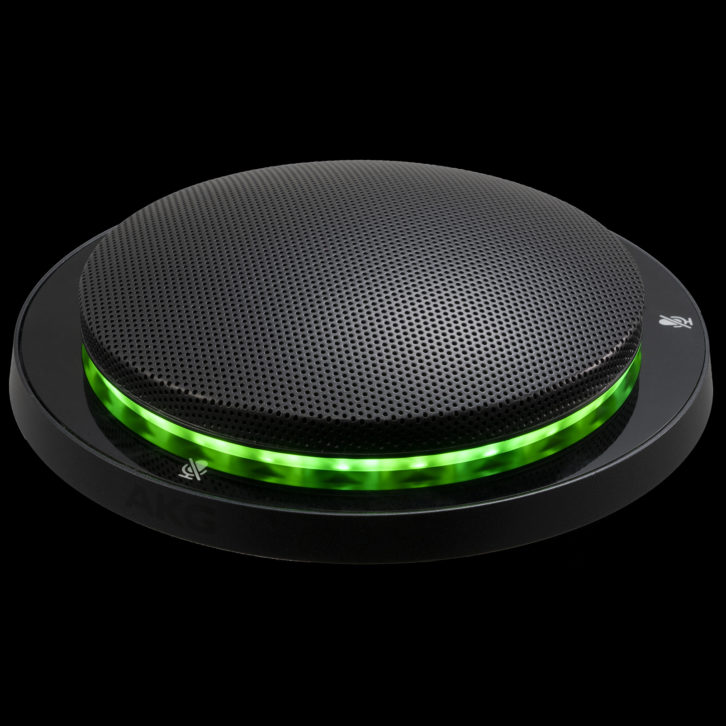 The CBL301 from AKG is a very low profile triple element boundary layer microphone with user controls for talk/mute and a cardioid pickup pattern that is adjustable from 270 to 360 degrees. Talk/mute is switched by simply touching the mic and red/green/blue LEDs indicate the talk/mute mode. Installation is simplified by its screw terminals and RF interference suppression shields the unit from laptop and phone signals.
The CBL301 from AKG is a very low profile triple element boundary layer microphone with user controls for talk/mute and a cardioid pickup pattern that is adjustable from 270 to 360 degrees. Talk/mute is switched by simply touching the mic and red/green/blue LEDs indicate the talk/mute mode. Installation is simplified by its screw terminals and RF interference suppression shields the unit from laptop and phone signals. 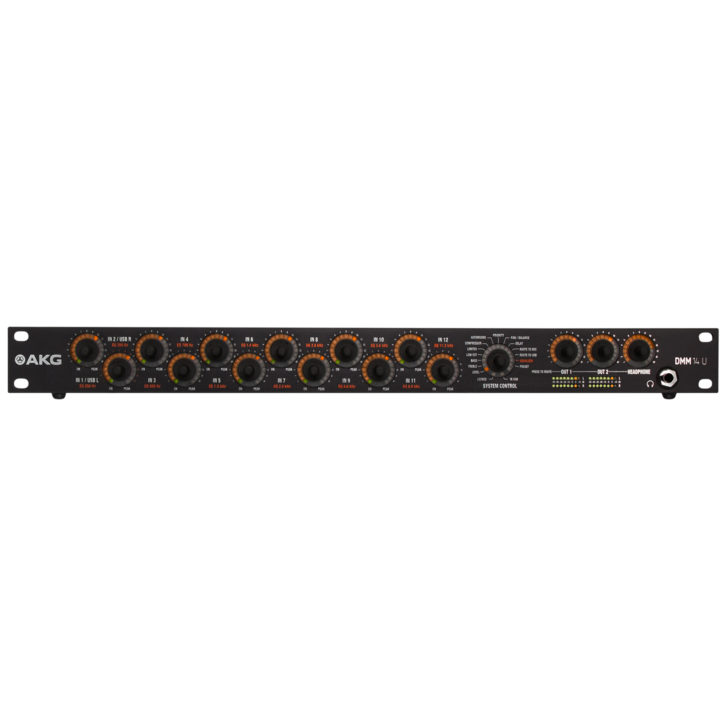 AKG can also provide the DMM14 U reference digital automatic microphone mixer with its 12 band graphic EQ on the outputs, 6 programmable presets and 2-channel USB streaming in and out. Keeping noise from multiple mics to a minimum, the DMM14 U also provides DSP functions such as filters, compression/limiting, ducking and routing.
AKG can also provide the DMM14 U reference digital automatic microphone mixer with its 12 band graphic EQ on the outputs, 6 programmable presets and 2-channel USB streaming in and out. Keeping noise from multiple mics to a minimum, the DMM14 U also provides DSP functions such as filters, compression/limiting, ducking and routing.
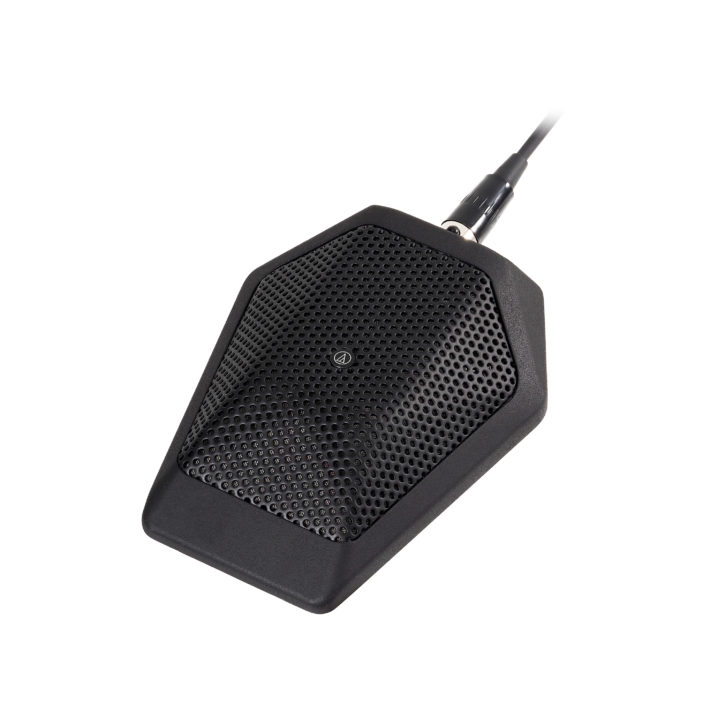 Audio-Technica’s solution to speech intelligibility in surface mount applications is the U851Rb condenser boundary mic. Equipped with a PivotPoint rotating output connector, UniSteep filter and UniGuard RFI-shielding technology, the mic can provide flexible operating characteristics and very clear sound. The unit’s polar pattern can be changed through interchangeable condenser elements. The die cast case and silicon foam bottom pads give it durability and minimize transfer of mounting surface vibration.
Audio-Technica’s solution to speech intelligibility in surface mount applications is the U851Rb condenser boundary mic. Equipped with a PivotPoint rotating output connector, UniSteep filter and UniGuard RFI-shielding technology, the mic can provide flexible operating characteristics and very clear sound. The unit’s polar pattern can be changed through interchangeable condenser elements. The die cast case and silicon foam bottom pads give it durability and minimize transfer of mounting surface vibration. 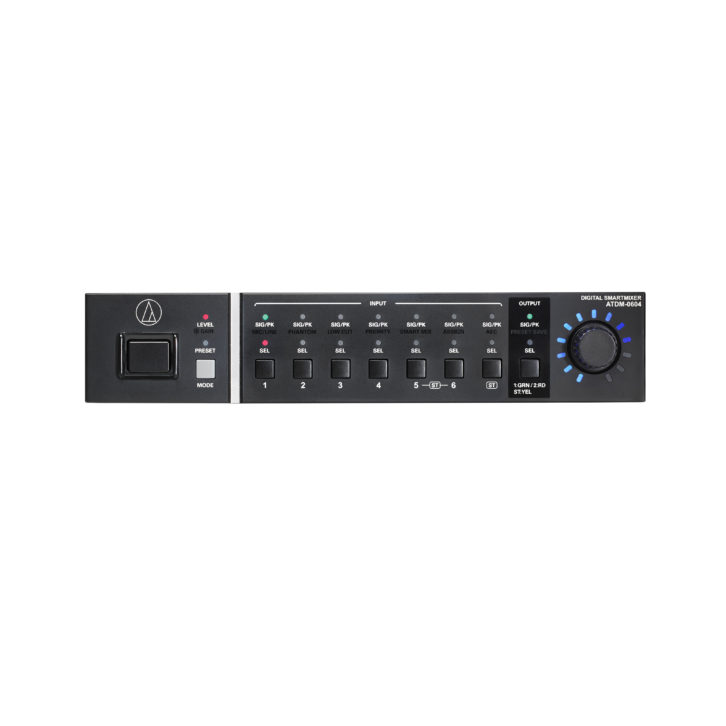 Also from Audio-Technica, the ATDM-0604 automatic mixer uses SmartMixer technology to operate in gate or gain sharing mode. Through the front panel LEDs and controls the channel volume levels can be set, presets can be made and recalled and IP configuration can be changed between auto and static. There are four balanced microphone inputs, two balanced Mic/Line inputs and one unbalanced stereo input. The unit also features two balanced and two unbalanced outputs.
Also from Audio-Technica, the ATDM-0604 automatic mixer uses SmartMixer technology to operate in gate or gain sharing mode. Through the front panel LEDs and controls the channel volume levels can be set, presets can be made and recalled and IP configuration can be changed between auto and static. There are four balanced microphone inputs, two balanced Mic/Line inputs and one unbalanced stereo input. The unit also features two balanced and two unbalanced outputs.
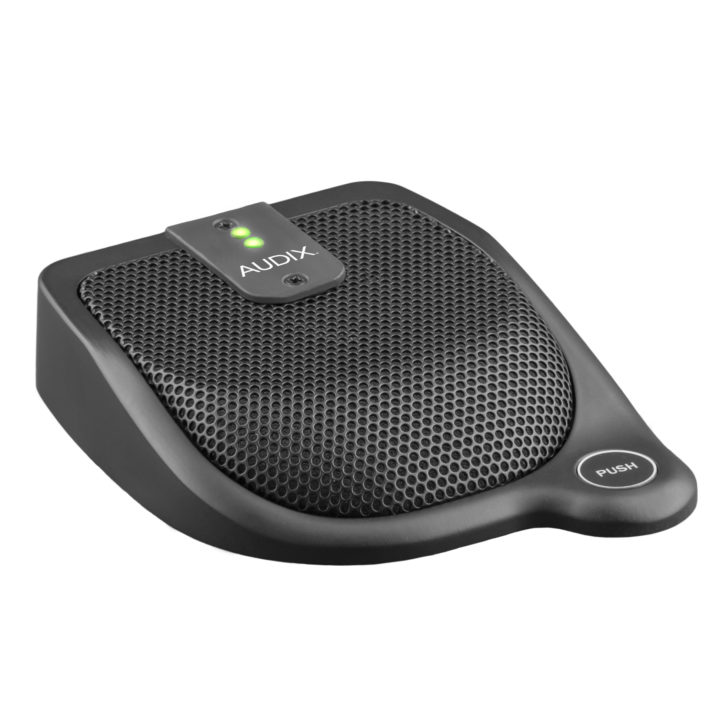 Optimized for speech, the Audix M63 condenser boundary microphone features local toggle on/off, momentary talk and mute switching, and red/green LED status indicators. The patented internal shock mount suspension system helps isolate the mic from surface vibration and touch noise. Once the 48VDC phantom power is applied the unit is ready to operate with no additional wiring. There is a black zinc alloy case, slide resistant rubber base and RFI shielding protection. The M63B model has the cable exiting the case on the bottom so that it can be passed through a table or podium surface. The polar pattern can be set to cardioid or omnidirectional and the mic’s frequency response is 50 Hz to 15 kHz.
Optimized for speech, the Audix M63 condenser boundary microphone features local toggle on/off, momentary talk and mute switching, and red/green LED status indicators. The patented internal shock mount suspension system helps isolate the mic from surface vibration and touch noise. Once the 48VDC phantom power is applied the unit is ready to operate with no additional wiring. There is a black zinc alloy case, slide resistant rubber base and RFI shielding protection. The M63B model has the cable exiting the case on the bottom so that it can be passed through a table or podium surface. The polar pattern can be set to cardioid or omnidirectional and the mic’s frequency response is 50 Hz to 15 kHz.
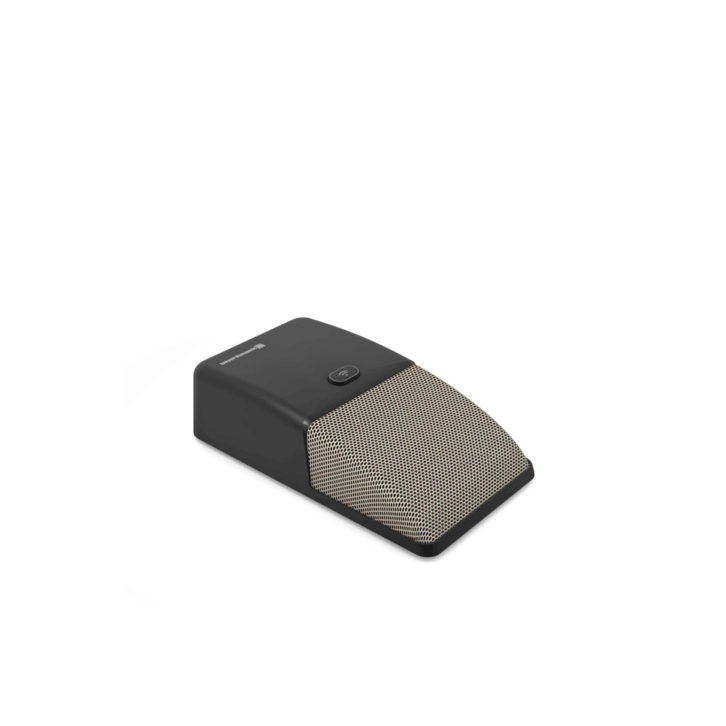 The beyerdynamic Quinta TB wireless boundary mic has 128-bit encryption and a 24-bit PIN code for security and it can operate up to 14 hours after two hours in a charging dock or it can be operated and charged with a power adapter. Through software the mic can be set to run in multiple modes and there is a backlit button that lights in three colors to indicate the current operating mode. Scudio technology makes the mic impenetrable to RFI and the Quinta TB can transmit in 2.4, 5.2 and 5.8 GHz bands. Integrated NiMH batteries provide power while the charging status of the battery can be monitored and transmitted to the control unit.
The beyerdynamic Quinta TB wireless boundary mic has 128-bit encryption and a 24-bit PIN code for security and it can operate up to 14 hours after two hours in a charging dock or it can be operated and charged with a power adapter. Through software the mic can be set to run in multiple modes and there is a backlit button that lights in three colors to indicate the current operating mode. Scudio technology makes the mic impenetrable to RFI and the Quinta TB can transmit in 2.4, 5.2 and 5.8 GHz bands. Integrated NiMH batteries provide power while the charging status of the battery can be monitored and transmitted to the control unit.
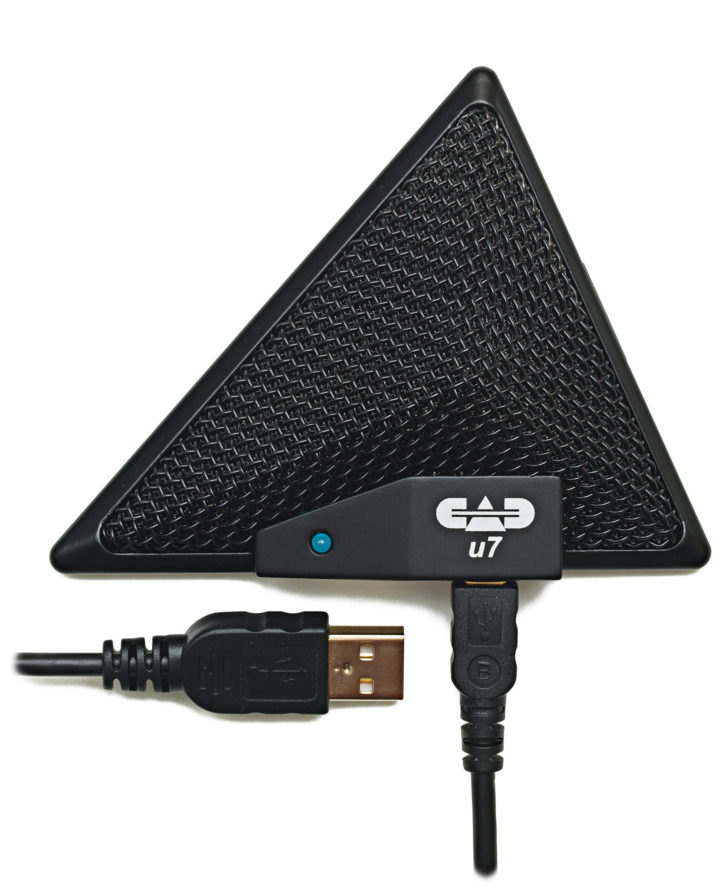
A USB option is offered by CAD Audio in the U7 omnidirectional boundary microphone. As is usually the case with USB gear it is plug and play for quick and easy use in the home or at the office. Conferencing and dictation are perfect applications for the U7 on any Windows or MAC system and there is a 10ft. USB cable included. The frequency response is optimized for speech and it runs on the USB bus power. The black case and very low profile allow the mic to blend easily into the visual environment and stay out of the way.
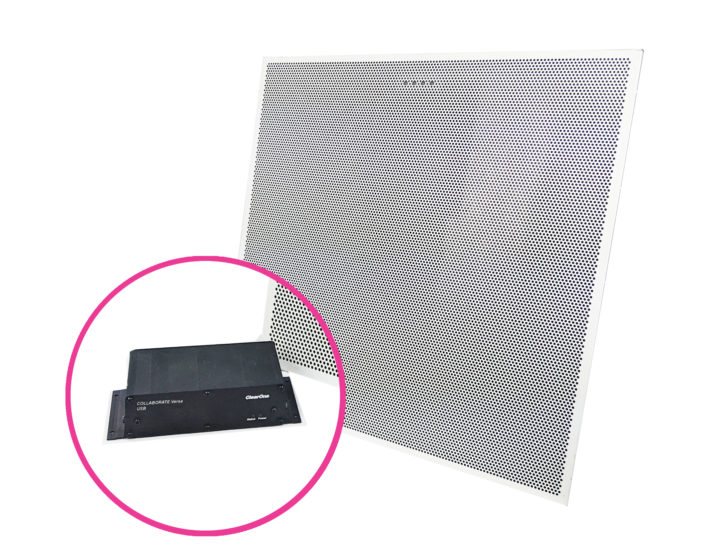 The new ClearOne COLLABORATE Versa Lite CT is a USB audio-enabled beamforming ceiling tile microphone array that can be used for a range of cloud collaboration applications. The system can be configured using CONSOLE AI Lite software with Audio Intelligence and Auto Connect. A laptop or room PC can be connected directly to the USB expander to share room audio. Sound is enhanced with the unit’s dual 10W power amps. The included 50ft. CAT6 cable connects the USB expander to the BMA CTH.
The new ClearOne COLLABORATE Versa Lite CT is a USB audio-enabled beamforming ceiling tile microphone array that can be used for a range of cloud collaboration applications. The system can be configured using CONSOLE AI Lite software with Audio Intelligence and Auto Connect. A laptop or room PC can be connected directly to the USB expander to share room audio. Sound is enhanced with the unit’s dual 10W power amps. The included 50ft. CAT6 cable connects the USB expander to the BMA CTH.  Also available from ClearOne is the Converge Pro 2 128 advanced twelve channel microphone mixer. The unit features configurable mic/line audio inputs, eight configurable mic/line level outputs and built-in USB audio. Outboard DSP and peripherals attach through C-link and P-link connections and control options include a touch panel controller, BYOD dialer apps and third party control modules.
Also available from ClearOne is the Converge Pro 2 128 advanced twelve channel microphone mixer. The unit features configurable mic/line audio inputs, eight configurable mic/line level outputs and built-in USB audio. Outboard DSP and peripherals attach through C-link and P-link connections and control options include a touch panel controller, BYOD dialer apps and third party control modules.
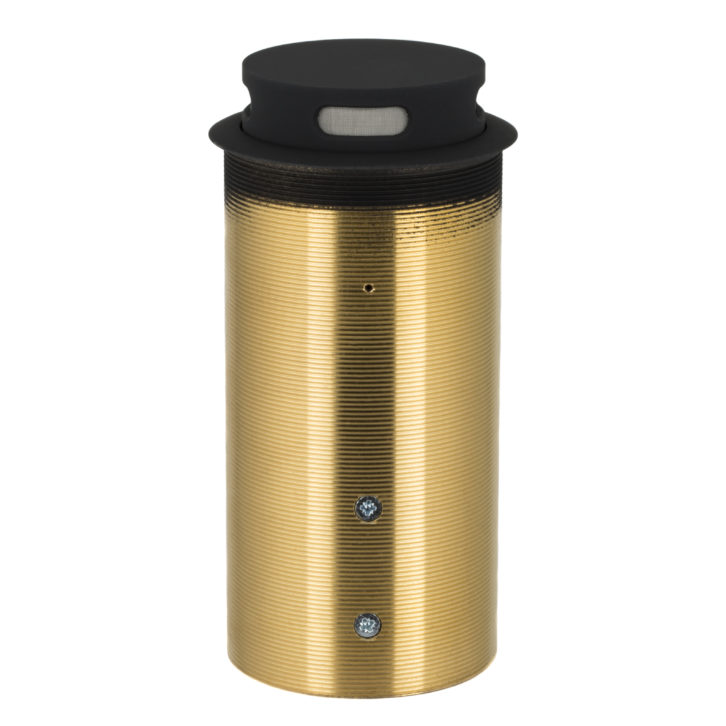 A traditional leader in microphone products, Clockaudio can provide a range of boundary mics one of which is the CRM 203-RF. Featuring a cardioid pickup pattern, the mic installs into a conference table or podium to expose a very small portion of the unit. With immunity to RF interference and a built-in power module the CRM 203-RF can provide 50 Hz to 18 kHz frequency response and handle a maximum sound pressure level of up to 125dB at 1 kHz.
A traditional leader in microphone products, Clockaudio can provide a range of boundary mics one of which is the CRM 203-RF. Featuring a cardioid pickup pattern, the mic installs into a conference table or podium to expose a very small portion of the unit. With immunity to RF interference and a built-in power module the CRM 203-RF can provide 50 Hz to 18 kHz frequency response and handle a maximum sound pressure level of up to 125dB at 1 kHz.
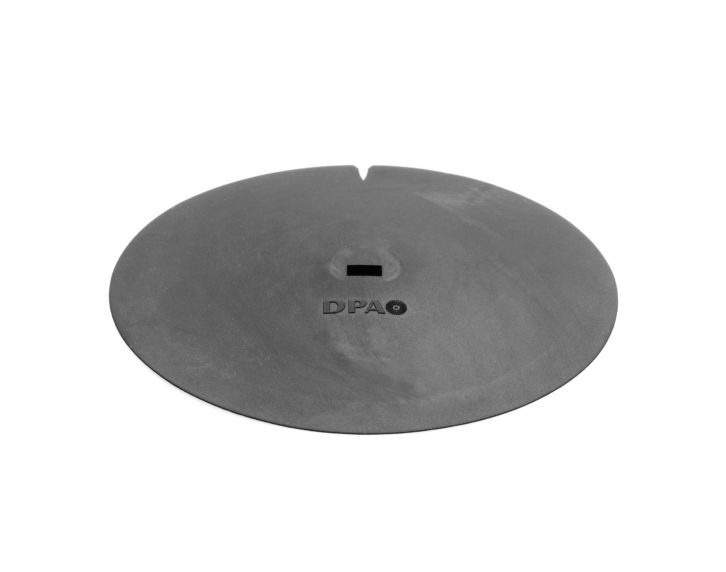 The DPA BLM6000-B is a special boundary layer mount for a lavalier microphone. Composed of a soft layer of durable rubber with a diameter of just under three inches, the mount has an underside cavity for mounting a DPA 4060, 4061, 4062 or 4063 microphone. This enables sound pickup with greater clarity and intelligibility. In this configuration the mic mounted into the BLM-6000B can be used for conferences and piano pickup. The mount can be attached to a podium, conference table, floor, wall or ceiling. For the piano application, the mount can be placed on the inside of an open grand piano.
The DPA BLM6000-B is a special boundary layer mount for a lavalier microphone. Composed of a soft layer of durable rubber with a diameter of just under three inches, the mount has an underside cavity for mounting a DPA 4060, 4061, 4062 or 4063 microphone. This enables sound pickup with greater clarity and intelligibility. In this configuration the mic mounted into the BLM-6000B can be used for conferences and piano pickup. The mount can be attached to a podium, conference table, floor, wall or ceiling. For the piano application, the mount can be placed on the inside of an open grand piano.
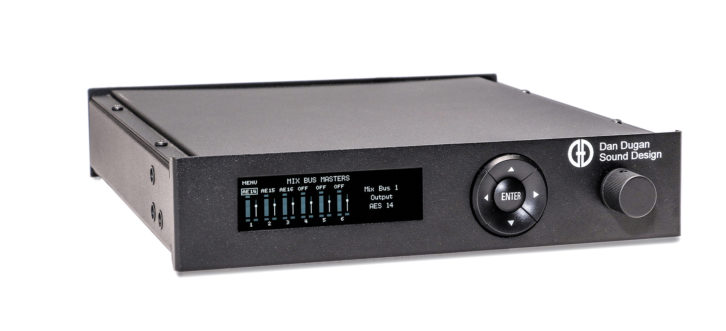 One creation of audio genius Dan Dugan, marketed by his company Dan Dugan Sound Design, is the Model E-3A Automatic Mixing Controller. Designed for AES digital I/O, the device can use all Dugan algorithms: Speech System, Music System and Gain Limiting. There is a six-bus pre/post matrix mixer and channels may be grouped into three independent automixers. Remote control is made possible through the Dugan Control Panel for Java (included) and Dugan Control Panel for iPad (sold separately). There is a miniature control panel for setup or adjustments from front panel. Up to eight units can be linked into one system in an optical ring network.
One creation of audio genius Dan Dugan, marketed by his company Dan Dugan Sound Design, is the Model E-3A Automatic Mixing Controller. Designed for AES digital I/O, the device can use all Dugan algorithms: Speech System, Music System and Gain Limiting. There is a six-bus pre/post matrix mixer and channels may be grouped into three independent automixers. Remote control is made possible through the Dugan Control Panel for Java (included) and Dugan Control Panel for iPad (sold separately). There is a miniature control panel for setup or adjustments from front panel. Up to eight units can be linked into one system in an optical ring network.
 The IMB 30 and IMBL30 boundary microphones from Earthworks are designed for omnidirectional pickup with a frequency response optimized for speech and they are compatible with all DSP systems that provide 24-48V phantom power. Table thumping and room noise are minimized by a built-in low frequency filter. The IMBL30 variant is equipped with dual-color LumiComm light ring and touch sensor output so that the LED ring’s color can be set to show the microphone’s function. When the mic is mounted into a flat surface the width of the flange is barely an inch and a half wide. The mics are available in black, white and stainless finish. They are perfect for teleconferences, lectures, board meetings, surveillance and a wide range of other applications.
The IMB 30 and IMBL30 boundary microphones from Earthworks are designed for omnidirectional pickup with a frequency response optimized for speech and they are compatible with all DSP systems that provide 24-48V phantom power. Table thumping and room noise are minimized by a built-in low frequency filter. The IMBL30 variant is equipped with dual-color LumiComm light ring and touch sensor output so that the LED ring’s color can be set to show the microphone’s function. When the mic is mounted into a flat surface the width of the flange is barely an inch and a half wide. The mics are available in black, white and stainless finish. They are perfect for teleconferences, lectures, board meetings, surveillance and a wide range of other applications.
 The Lectrosonics DM1612f audio processor is a digital automatic matrix mixer with 16 mic/line inputs and 12 line outputs, four of which are mic/line switchable. Each input channel can participate differently in each output mix and each output has its own NOM mixing bus. There are USB and RS-232 interfaces for setup and control and 128 macros available for storing up to 64 commands per macro. The AMX and Crestron compatible systems have continuous fan cooling and there are digital I/O ports for daisy chaining and to connect other LecNet 2 devices. Cat 5 and USB cables are included along with interconnect cables and two 25-pin female connectors.
The Lectrosonics DM1612f audio processor is a digital automatic matrix mixer with 16 mic/line inputs and 12 line outputs, four of which are mic/line switchable. Each input channel can participate differently in each output mix and each output has its own NOM mixing bus. There are USB and RS-232 interfaces for setup and control and 128 macros available for storing up to 64 commands per macro. The AMX and Crestron compatible systems have continuous fan cooling and there are digital I/O ports for daisy chaining and to connect other LecNet 2 devices. Cat 5 and USB cables are included along with interconnect cables and two 25-pin female connectors.
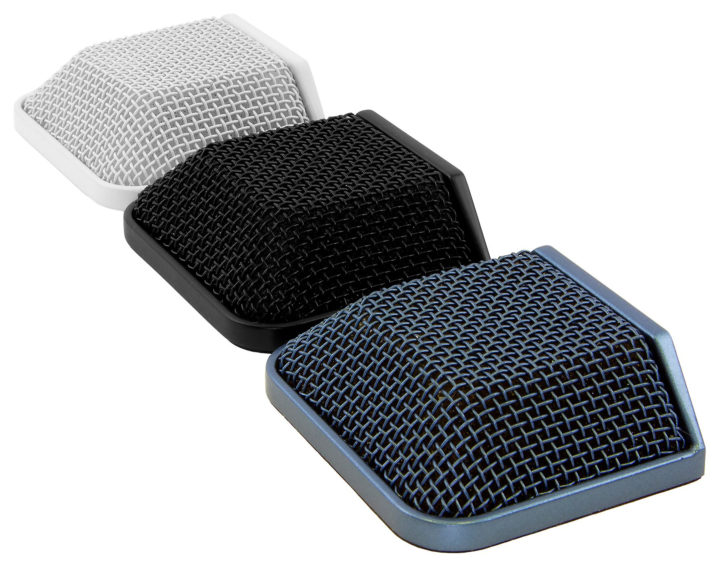 The award winning AC-44 USB condenser mic from MXL can appear almost like part of the conference table using its 3-capsule array for a wide 180-degree pickup area. Minimizing sound from the back side of the mic, it rises only an inch above the surface on which it is placed. The USB-C connection means that it fits into any conference system and is ready to go as soon as it is connected. Its 30 Hz-20 kHz frequency range allows different voices to be easily recognized and the separate analog output delivers a direct feed on a 3.5mm connector. A 6ft. USB Type C to Type A cable is included. These features make it great for telemedicine, conferencing and huddle rooms.
The award winning AC-44 USB condenser mic from MXL can appear almost like part of the conference table using its 3-capsule array for a wide 180-degree pickup area. Minimizing sound from the back side of the mic, it rises only an inch above the surface on which it is placed. The USB-C connection means that it fits into any conference system and is ready to go as soon as it is connected. Its 30 Hz-20 kHz frequency range allows different voices to be easily recognized and the separate analog output delivers a direct feed on a 3.5mm connector. A 6ft. USB Type C to Type A cable is included. These features make it great for telemedicine, conferencing and huddle rooms.
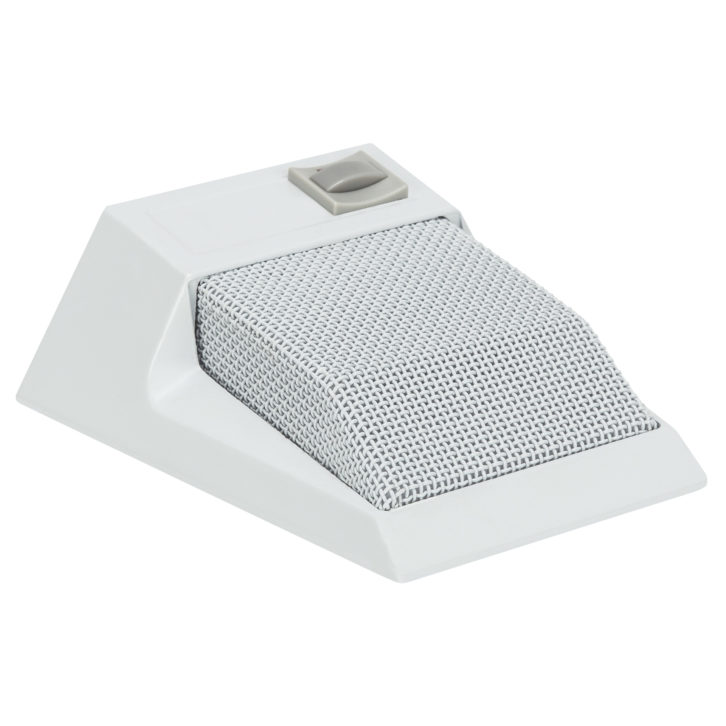 A presenter can work at a distance from the MC 5002 desktop condenser microphone because RCF designed it with unidirectional pickup that minimizes background noise while the low cut setting can cut out room boom from HVAC systems. The tough white metal case includes an LED to show when the mic is on and a switch for flat, boost and low cut operation modes. The included 10ft. cable handles audio and 12-48V phantom power and connects on a 5-pin mini XLR.
A presenter can work at a distance from the MC 5002 desktop condenser microphone because RCF designed it with unidirectional pickup that minimizes background noise while the low cut setting can cut out room boom from HVAC systems. The tough white metal case includes an LED to show when the mic is on and a switch for flat, boost and low cut operation modes. The included 10ft. cable handles audio and 12-48V phantom power and connects on a 5-pin mini XLR.
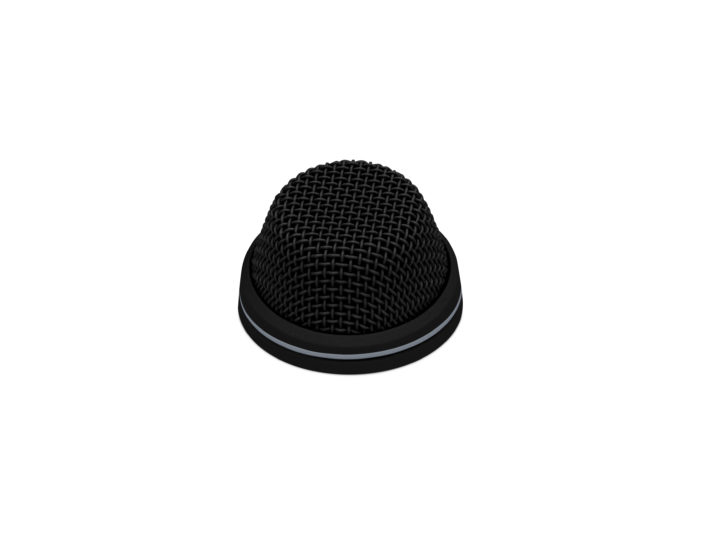 The Sennheiser MEB 104 cardioid condenser boundary microphone can be mounted with its M20 thread into a conference table or other flat surface protruding only .75in. above the table and its tough metal case protects it from any impacts. The L variant is available in the same black or white finish and it adds a bi-color LED ring for mic status indication. It features a wide frequency response and the ability to handle sound pressure levels up to 125dB. Running on 12 to 48V of phantom power, the MEB 104 consumes just 3mA of current and uses a standard XLR 3 connector concealed on the bottom.
The Sennheiser MEB 104 cardioid condenser boundary microphone can be mounted with its M20 thread into a conference table or other flat surface protruding only .75in. above the table and its tough metal case protects it from any impacts. The L variant is available in the same black or white finish and it adds a bi-color LED ring for mic status indication. It features a wide frequency response and the ability to handle sound pressure levels up to 125dB. Running on 12 to 48V of phantom power, the MEB 104 consumes just 3mA of current and uses a standard XLR 3 connector concealed on the bottom. 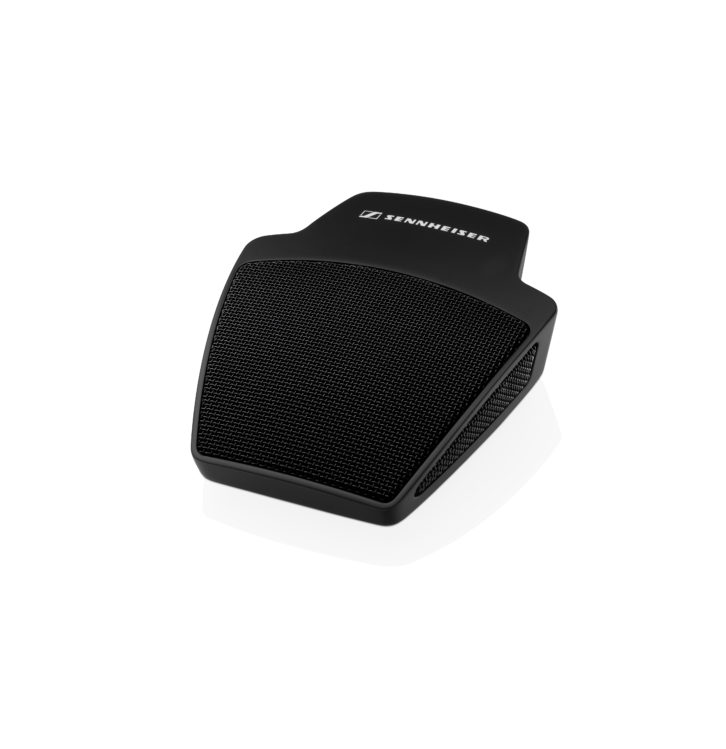 Sennheiser also has the MEB 114 with 40 Hz – 20 kHz frequency response and it can handle up to a 140dB sound pressure level. There is also a bi-color LED ring on the MEB 114 for status indication. A camera or media control system can be triggered via the TTL logic output on the bottom side.
Sennheiser also has the MEB 114 with 40 Hz – 20 kHz frequency response and it can handle up to a 140dB sound pressure level. There is also a bi-color LED ring on the MEB 114 for status indication. A camera or media control system can be triggered via the TTL logic output on the bottom side.
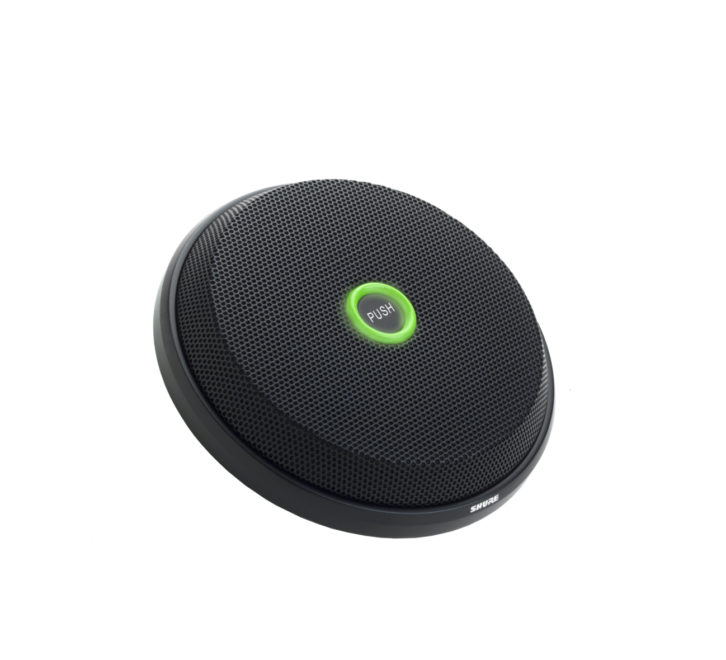 Conference rooms have never been the same since Shure’s introduction of the MX396 Microflex multi-element boundary microphone. Available in two or three-element versions, the mic provides a bi-color status indicator, programmable mute switch and a logic input/output for remote LED and mute control. A special feature is the separate audio output for each element. Interference is blocked by its RF filtering with CommShield technology. The two variants can be used together to custom tailor the pickup pattern for the room. Each element uses 12 to 48V phantom power and this runs the LED as well. DIP switches on the bottom can be used to set the operating mode.
Conference rooms have never been the same since Shure’s introduction of the MX396 Microflex multi-element boundary microphone. Available in two or three-element versions, the mic provides a bi-color status indicator, programmable mute switch and a logic input/output for remote LED and mute control. A special feature is the separate audio output for each element. Interference is blocked by its RF filtering with CommShield technology. The two variants can be used together to custom tailor the pickup pattern for the room. Each element uses 12 to 48V phantom power and this runs the LED as well. DIP switches on the bottom can be used to set the operating mode. 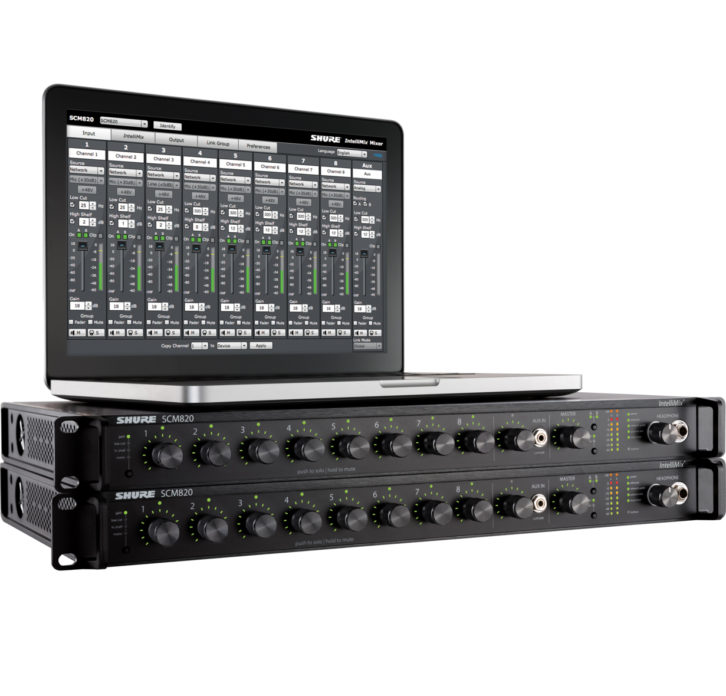 The Shure SCM820 Digital IntelliMix automatic mixer uses Dante network audio with up to 96 channels and 8-band EQ. Software guided configuration allows customization of operating modes including Last Mic Lock-On (LMLO) to keep the most recently used mic on until another is triggered.
The Shure SCM820 Digital IntelliMix automatic mixer uses Dante network audio with up to 96 channels and 8-band EQ. Software guided configuration allows customization of operating modes including Last Mic Lock-On (LMLO) to keep the most recently used mic on until another is triggered.
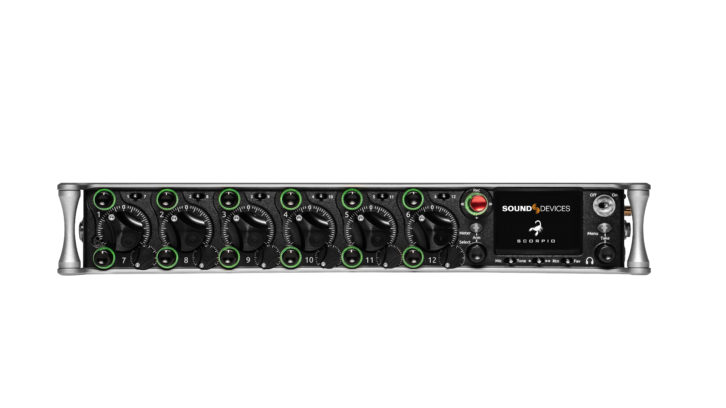 Sound Devices takes automixing out on the road with their Scorpio premium portable mixer-recorder. With 32 channels, 12 busses and 36 tracks, this machine can record on an internal 256 GB SSD as well as two external SD cards connected on slots. Dante audio in/out, AES in/out and analog outputs give operators complete versatility on location shoots. Up to 12 buses may be individually mixed. This award winner really takes a whole studio to the street. The unit’s superior preamps include built-in analog limiters, high pass filters, delay, 3-band EQ and phantom power.
Sound Devices takes automixing out on the road with their Scorpio premium portable mixer-recorder. With 32 channels, 12 busses and 36 tracks, this machine can record on an internal 256 GB SSD as well as two external SD cards connected on slots. Dante audio in/out, AES in/out and analog outputs give operators complete versatility on location shoots. Up to 12 buses may be individually mixed. This award winner really takes a whole studio to the street. The unit’s superior preamps include built-in analog limiters, high pass filters, delay, 3-band EQ and phantom power.
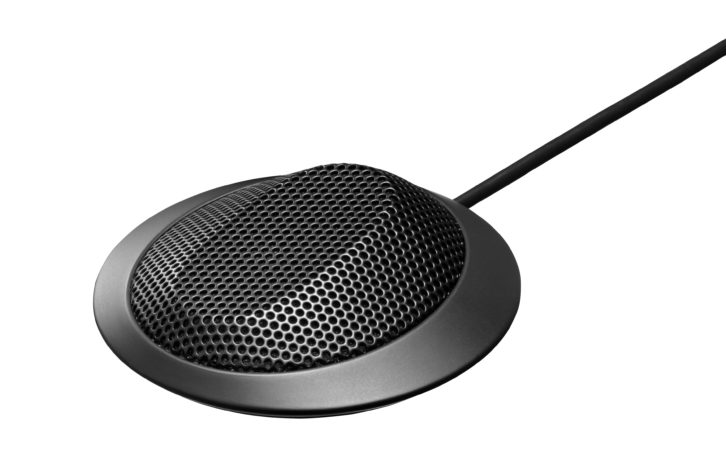 The EM-700 boundary microphone from TOA Electronics has a hemispherical pickup pattern and is slightly tilted in its case to help focus on sounds from the front while exhibiting more rejection of sound from the rear. It operates on 9-52VDC and has a frequency response of 35 Hz to 20 kHz to easily provide great voice recording and transmission. There is also a low-cut filter switch on the bottom of the case that rolls off the response below 100 Hz at -12dB per octave. The body is die cast aluminum in black and the 25ft. cable is terminated with a 3-pin male XLR.
The EM-700 boundary microphone from TOA Electronics has a hemispherical pickup pattern and is slightly tilted in its case to help focus on sounds from the front while exhibiting more rejection of sound from the rear. It operates on 9-52VDC and has a frequency response of 35 Hz to 20 kHz to easily provide great voice recording and transmission. There is also a low-cut filter switch on the bottom of the case that rolls off the response below 100 Hz at -12dB per octave. The body is die cast aluminum in black and the 25ft. cable is terminated with a 3-pin male XLR.
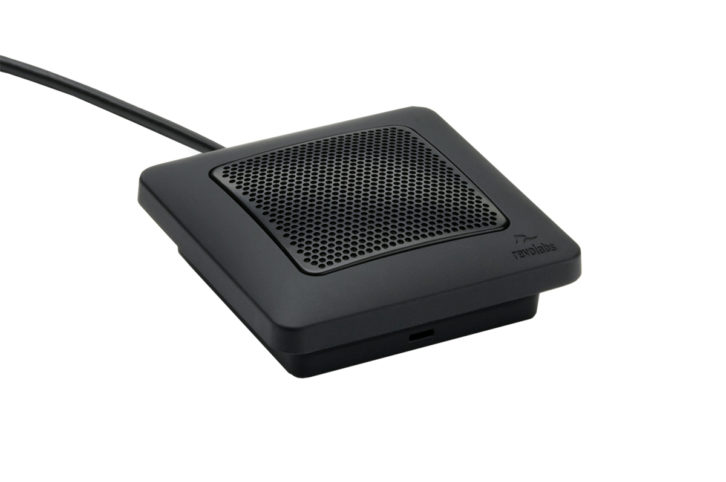 Among the mic models from Yamaha Unified Communications are the Elite Wired Microphones including the directional and omnidirectional tabletop mics. Capable of local and remote control with an external control unit, the mics come in 5-wire and 3-wire versions with push to talk/push to mute functions along with LEDs that indicate the operating mode. These units are impervious to GSM noise from wireless devices and they can be purchased in black, white or brushed nickel finish. The frequency response on these is 25 Hz to 18 kHz and they run on 23-52VDC phantom power.
Among the mic models from Yamaha Unified Communications are the Elite Wired Microphones including the directional and omnidirectional tabletop mics. Capable of local and remote control with an external control unit, the mics come in 5-wire and 3-wire versions with push to talk/push to mute functions along with LEDs that indicate the operating mode. These units are impervious to GSM noise from wireless devices and they can be purchased in black, white or brushed nickel finish. The frequency response on these is 25 Hz to 18 kHz and they run on 23-52VDC phantom power.


